Iconic Cuisine and Cocktails—and the Hotels That Made Them Famous
Eggs Benedict, the Bloody Mary, the Brownie, and more. Here’s how some of the most celebrated dishes and drinks were born
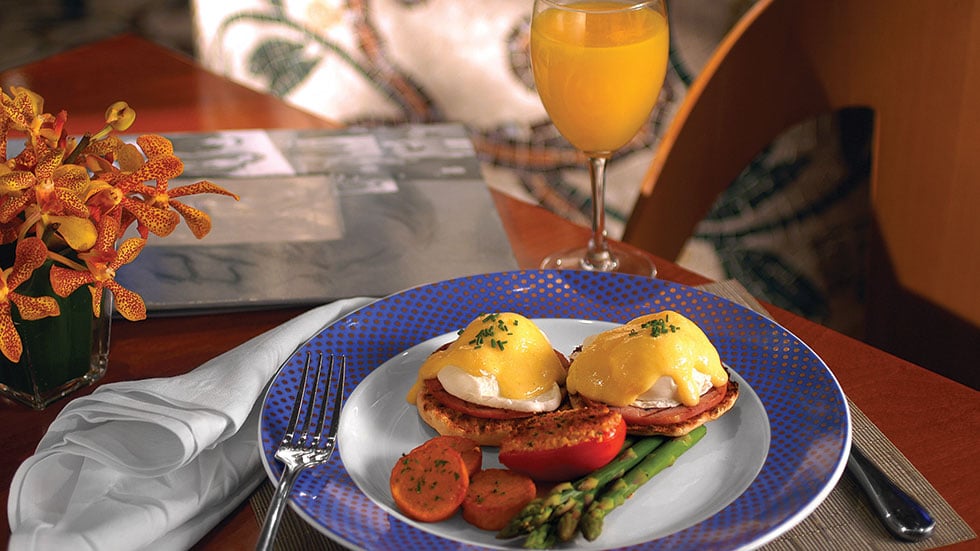

If you love a story with tasty tidbits and a side of history, the Waldorf Astoria New York serves it on a silver platter. For it was here in this grand, gilded hotel where several famous dishes were invented or perfected. That’s largely in credit to the maître d’hôtel Oscar Tschirky.
Fancy eggs Benedict? Thank “Oscar of the Waldorf” and Wall Street broker Lemuel Benedict. Benedict, so the story goes, walked into the Waldorf with a hangover one day in 1894 and requested buttered toast, poached eggs, bacon and hollandaise to cure his condition. Tschirky obliged him, swapping out the buttered toast with English muffins and American bacon with Canadian bacon, and—voilà!—eggs Benedict was born.
Tschirky also conceived the Waldorf’s namesake salad—a complement of apples, celery and mayonnaise-based dressing (and nowadays, grapes and walnuts)—in 1896 for a charity ball. And while red velvet cake can trace its origins to Victorian times, the hotel popularized the silky red confection (getting its red color from beet juice) slathered in cream cheese frosting when it appeared on the Waldorf’s menu in the 1930s. Allegedly, the Waldorf chef kept the recipe a secret until a socialite wrote him asking to reveal it; he sent her the recipe—along with a hefty bill. The socialite spread the recipe in an act of…well, sweet revenge, and the rest is (sort-of) history.
While the original Waldorf was razed in 1929 to make way for the Empire State Building, the current hotel, built in 1931 on prime Park Avenue real estate, is due to reopen this spring after a years-long, $1 billion renovation.
Of course, the Waldorf isn’t the only hotel that claims culinary fame. Here, we share more top properties where hospitality and history are served.
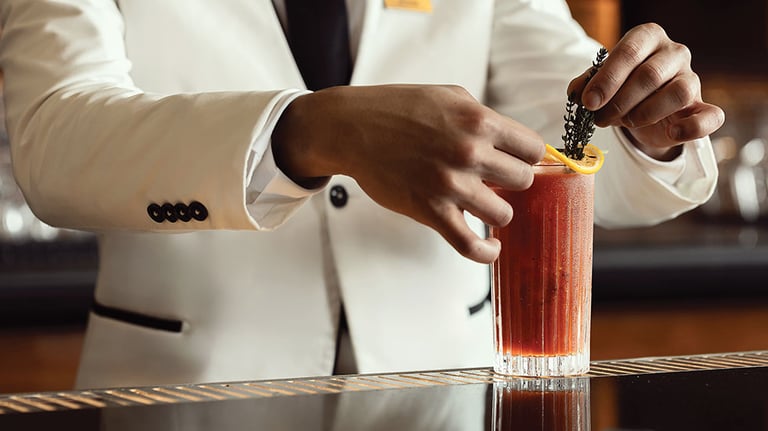
The Red Snapper
The St. Regis New York
Another hangover remedy, The Red Snapper—better known as the Bloody Mary—entered the cocktail canon at the AAA Five Diamond St. Regis New York, on ritzy Fifth Avenue in Manhattan. Legend has it, illustrious bartender Fernand Petiot perfected his own recipe by spicing up—think Tabasco, cayenne pepper, black peppercorns and more—this vodka-and-tomato-juice-based concoction at the hotel’s King Cole Bar in 1934.
Originally dubbed the Blood Mary—perhaps, it’s sometimes said, by a patron from Chicago who commented that it reminded him of a waitress nicknamed Bloody Mary from the Bucket of Blood bar back home—this hair-of-the-dog drink was coined The Red Snapper to appeal to the hotel’s sophisticated clientele. Today, Petiot’s Red Snapper remains The St. Regis’ starring cocktail, best sipped in the Art Nouveau grandeur of its birthplace bar.
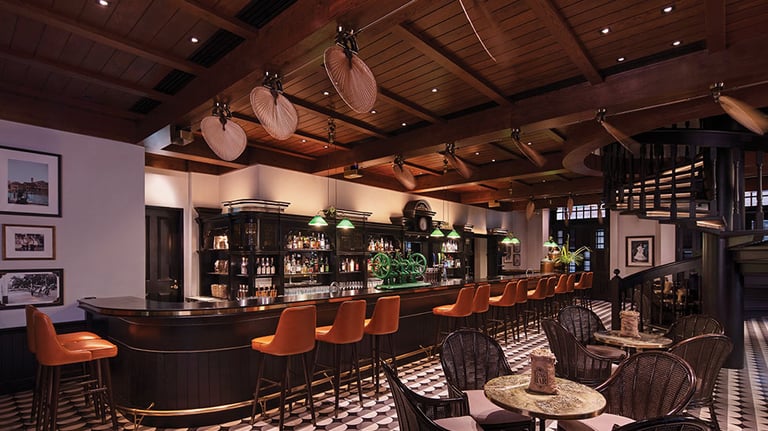
Singapore Sling
Raffles Singapore
Ingenious bartending and social decorum also brought about another fanciful infusion: the Singapore Sling. It was in 1915 at the Long Bar at the historic Raffles Singapore where barman Ngiam Tong Boon first crafted this fruity cocktail. During the early 1900s, when rubber and palm oil plantations owners from Malaya would converge on Singapore on weekends, the 1887 hotel was a humble 10-room bungalow, and its Long Bar was merely an assemblage of tables fronting a bustling road known as “the rendezvous of planters.”
While men sipped gin and whisky at the Long Bar, women could partake only of tea and fruit juices. So, Tong Boon created a beverage dupe that looked like juice but—along with pineapple juice, lime juice and grenadine—contained gin, curaçao, Bénédictine and cherry liqueurs. Today, guests come from far and wide to order the Singapore Sling in the glamorous 115-guestroom hotel and its reimagined Long Bar, complete with tropical plantation design motifs reminiscent of its rendezvous roots.
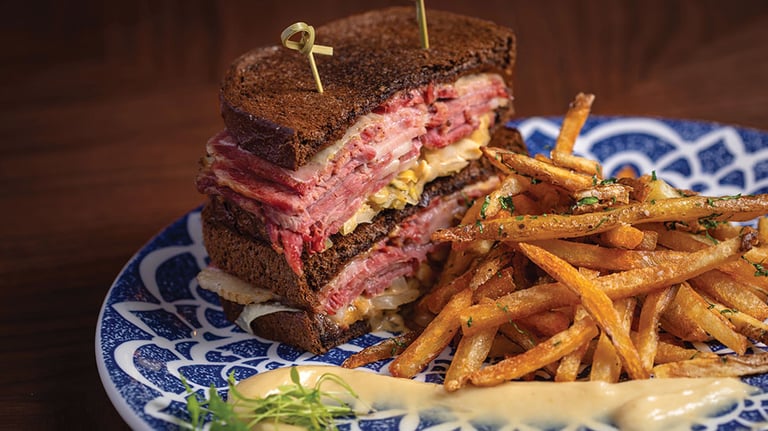
The Reuben
Kimpton Cottonwood Hotel
This superlative sandwich’s origin story involves a game of poker in the early 1900s at the Blackstone Hotel, now the AAA Four Diamond Kimpton Cottonwood Hotel in Omaha, Nebraska. Legend has it, one night, as local grocer Reuben Kulakofsky played cards with his buddies—called The Committee—he developed a hankering for a hearty sandwich and began rattling off ingredients: corned beef, Swiss cheese, sauerkraut and Thousand Island dressing on Russian rye bread. Bernard Schimmel, son of then-hotel-owner Charles Schimmel, whipped up “the Reuben,” which was such a winner with the poker group that the elder Schimmel added it to the menu in 1925.
Nowadays, guests can enjoy the Blackstone Reuben (now made with Gruyère) in the hotel’s Orléans Room restaurant in the charming Second Renaissance Revival building where it was born.
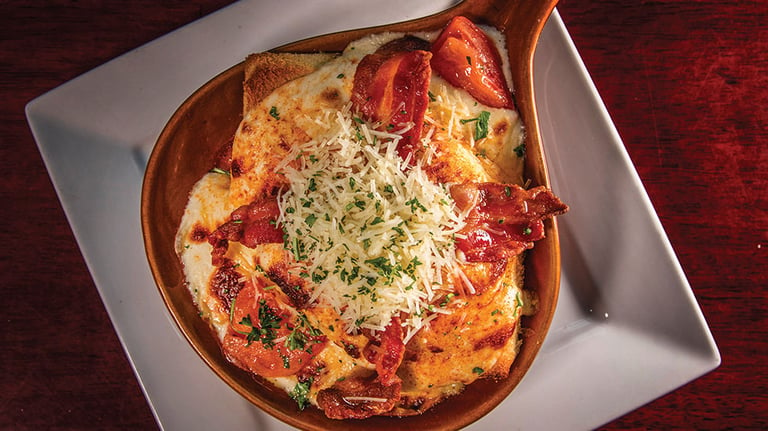
The Hot Brown
The Brown Hotel
In the 1920s, The Brown Hotel was the place for ballroom dancing in Louisville, Kentucky. Dinner dances would attract more than 1,200 guests, who’d trip the light fantastic into the wee hours of the morning. Famished, they’d then sashay over to the hotel’s restaurant for a pick-me-up. Chef Fred Schmidt, tired of serving humdrum ham and eggs, put his culinary prowess to work by creating a dish to delight the dancers. His composition? The Hot Brown, an open-faced amalgam of turkey, bacon and Mornay sauce layered on Texas toast.
While the Hot Brown now appears on menus around Louisville, there’s something special about enjoying the OG in the AAA Four Diamond Brown Hotel’s graceful turn-of-the-century surroundings.
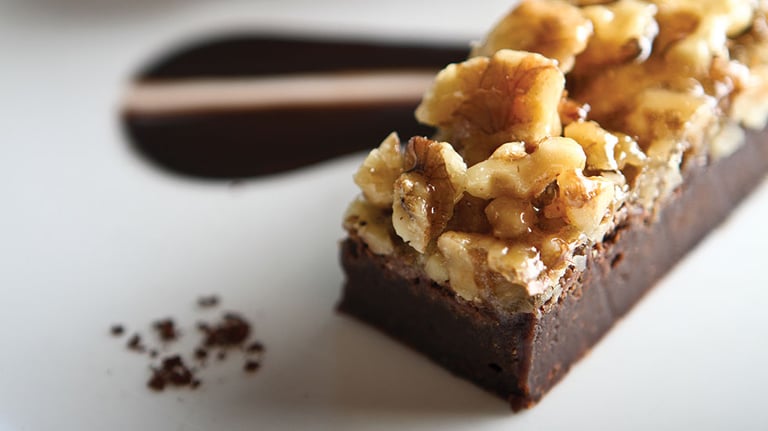
The Brownie
Palmer House Hilton
World’s fairs are about celebrating innovation and achievement, and you can count the brownie among them. For it was at the World’s Columbian Exposition in Chicago in 1893 that Bertha Palmer introduced the brownie to the world.
Bertha, who received the Palmer Hotel as a wedding gift from her wealthy husband, was chairing the exposition’s Ladies Board for Managers when she was asked to create a tidy, portable treat for boxed lunches. She turned to Pastry Chef Joseph Sehl of the Palmer House kitchen, where—presto!—he created the brownie, or so one of many stories goes.
That same century-old recipe—with fudge-like chocolate, apricot glaze and chopped walnuts—is served at the AAA Four Diamond Palmer House in Chicago today. Indulge in this decadent dessert in a dining atmosphere adorned with frescoes of Greek mythological figures, or try it with a twist in the form of Bertha’s Brownie Latte, the Brownie Manhattan or Bertha’s Brownie Pancakes.
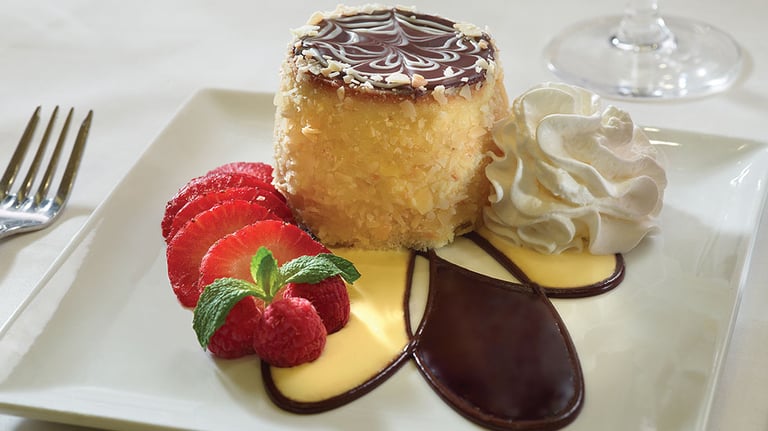
Boston Cream Pie
Omni Parker House
When the Parker House debuted across from Boston Common in 1855, Bostonians were no strangers to chocolate. Chocolate often appeared in beverages and puddings, and “pudding cake-pie” was a customary treat. Enter Parker House Chef Augustine Anézin and his staff, who borrowed elements of chocolate and pudding cake-pie by taking two-layer sponge cake, filling it with pastry cream and capping it with chocolate icing to create Parker House Chocolate Cream Pie, aka Boston Cream Pie. More cake than pie, this culinary icon became so beloved that, in 1958, the folks behind Betty Crocker distilled it into a boxed mix. And in 1996, Massachusetts passed legislation to make it the official state dessert, beating out the Toll House cookie, Indian pudding and the Fig Newton.
Today, you can savor a serving of Boston Cream Pie at the hotel’s Parker’s Restaurant in the very same exquisitely designed room in which Dickens, Emerson, Thoreau, Hawthorne, Longfellow and other literary greats dined.
Like them, we love a story with flavor, even if some morsels may be more fiction than fact—especially when served with a heaping of hotel hospitality.
